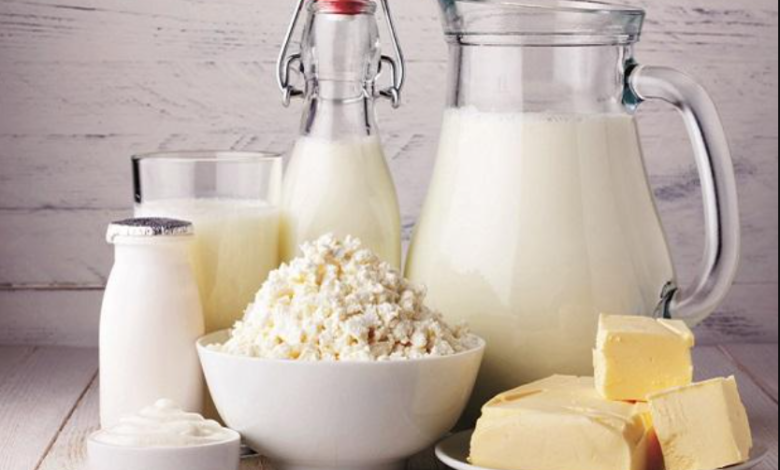The Everyday Super Ingredient: A Deeper Look at Milk Powder’s Role in Modern Lifestyles

In today’s fast-paced, health-conscious world, the demand for practical, long-lasting, and nutrient-rich food items continues to rise. Among the many essentials people keep in their pantries, milk powder is one product that has silently earned its place as a modern-day staple. Once considered merely a backup for fresh milk, it is now widely used by households, chefs, travelers, and even nutritionists.
Despite its understated reputation, milk powder plays an increasingly important role in today’s kitchens and food industries. From offering an easy way to enjoy dairy without refrigeration to providing a shelf-stable nutritional backup during emergencies, powdered milk proves itself to be both versatile and valuable.
What Makes Milk Powder So Versatile?
Milk powder is simply milk that has had all the water content removed through evaporation and drying processes. This transformation allows it to maintain a longer shelf life and provides greater storage and transportation advantages.
It is typically available in different forms to cater to a variety of dietary needs:
- Whole milk powder – includes all the milk fat for a richer flavor
- Skimmed milk powder – with low or no fat, suitable for calorie-restricted diets
- Instant milk powder – dissolves easily, even in cold water
- Fortified milk powders – enriched with nutrients like iron, calcium, or vitamins for growing children, seniors, or people with specific health concerns
This adaptability is part of the reason why milk powder is not just surviving but thriving in modern kitchens.
A Global Solution to Local Needs
Milk powder offers a universal solution to multiple challenges faced by people across regions and income levels. In developing countries, where fresh milk distribution is limited due to poor infrastructure, milk powder provides a reliable alternative that doesn’t require cold chains. In urban environments, where people live busy lives and require convenience, milk powder becomes an easy-to-store and quick-to-prepare source of nutrition.
Furthermore, international food aid programs and NGOs often rely on powdered milk for its cost efficiency and long shelf life, helping deliver essential nutrients to communities in need.
See also: The Importance of Secure Faxing in Healthcare: Understanding HIPAA Compliance
Everyday Uses That Go Beyond the Basics
Many people assume that powdered milk is used only for making beverages. However, the reality is much broader. Milk powder is a silent star in many culinary and household applications.
1. Baking and Confectionery
Powdered milk adds depth and richness to baked goods, especially bread, cookies, cakes, and pastries. It enhances browning and moisture retention, improving both texture and taste.
2. Creamy Soups and Sauces
By mixing milk powder into gravies, chowders, and white sauces, you get a creamy finish without the need for fresh dairy or cream. It also allows you to control the thickness and flavor intensity.
3. Beverage Enhancer
You can use milk powder as a creamer in tea and coffee or as a base for hot chocolate and health shakes. It dissolves quickly and offers consistent flavor.
4. Emergency Food Kits
In times of crisis or natural disasters, milk powder is a critical item in survival food kits. It is lightweight, doesn’t spoil easily, and provides essential nutrients to maintain health and energy.
5. DIY Beauty Treatments
Yes, even beauty enthusiasts have found use for powdered milk. When mixed with honey or rose water, it creates effective face masks and scrubs that brighten and soften skin naturally.
Nutritional Advantages of Milk Powder
Despite being in a dried form, milk powder retains almost all the essential nutrients of liquid milk. This makes it a powerful ally in daily nutrition.
- Calcium – crucial for maintaining bone strength and preventing osteoporosis
- High-quality Protein – supports muscle growth and repair
- Vitamin D – helps in the absorption of calcium and immune support
- Vitamin A – essential for skin and eye health
- Potassium and Magnesium – support cardiovascular function and hydration
Some fortified milk powders even include additional nutrients like omega-3 fatty acids, iron, or probiotics, targeting specific dietary needs.
How to Store and Use Milk Powder Effectively
Proper storage ensures that milk powder maintains its freshness and nutritional integrity. Once opened, it should be kept in an airtight container in a cool, dry place. Moisture, heat, and light can cause clumping or spoilage, so storing it in a pantry or cupboard away from the stove or sink is ideal.
When preparing milk from powder, follow the manufacturer’s instructions for the right powder-to-water ratio. Most brands recommend mixing 1 part powder to 3 or 4 parts water, depending on the desired richness.
Pro tip: To avoid clumping, first mix the powder with a small amount of warm water to create a smooth paste before adding the rest of the water.
Sustainable and Economical
Milk powder isn’t just practical—it’s also a smart choice for the environment and your wallet.
Environmental Benefits:
- Reduced transportation costs (lighter and more compact)
- Less need for refrigeration during shipping and storage
- Decreased food waste due to longer shelf life
Economic Benefits:
- Better value per serving compared to fresh milk
- No risk of spoilage before use
- Can be used in exact quantities needed, reducing waste
For large families, bakeries, restaurants, or individuals on a budget, milk powder provides significant cost savings without compromising on quality.
Tips for Choosing the Best Milk Powder
When selecting a product, consider the following:
- Nutritional Needs – Choose between whole or skimmed based on your dietary goals.
- Certifications – Ensure the product meets safety standards and is free from harmful additives.
- Allergy Considerations – Some milk powders are lactose-free or plant-based for those with dietary restrictions.
- Origin of Milk – Brands using milk from countries with strict quality control (like New Zealand or Australia) are often preferred.
- Flavor Profile – Some brands may add sugar or flavoring; check labels if you want a neutral taste.
Final Thoughts
While it may not always steal the spotlight, milk powder is undeniably one of the most useful, adaptable, and nutritionally sound products available today. It has shed its outdated image and emerged as a modern pantry must-have—whether you’re baking a cake, camping in the mountains, or simply preparing your morning coffee.
Its affordability, long shelf life, and broad usability make it a valuable asset for homes, businesses, and institutions alike. As food habits continue to evolve, milk powder is no longer just a substitute for fresh milk—it’s a conscious choice for smarter living.






